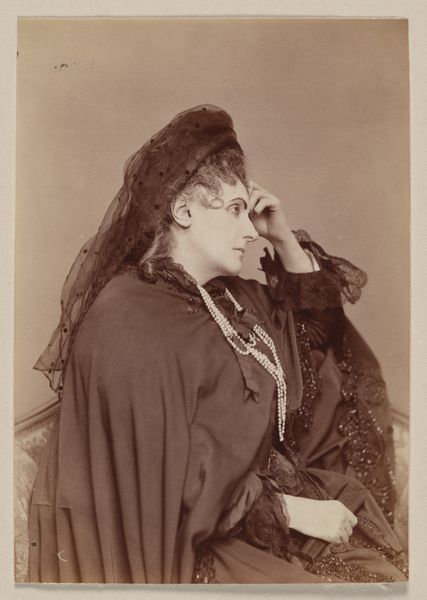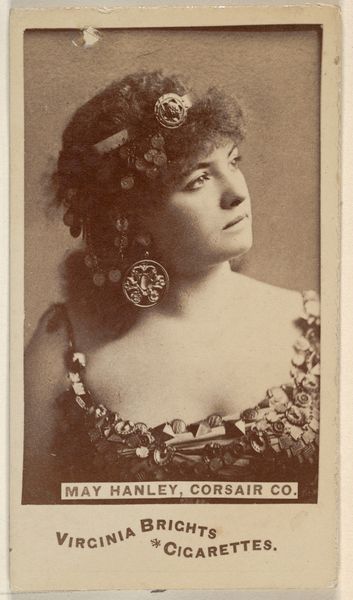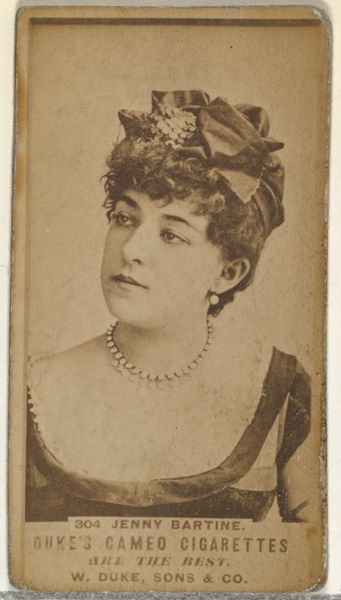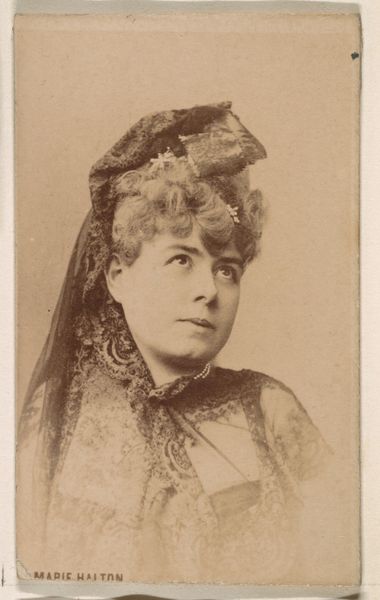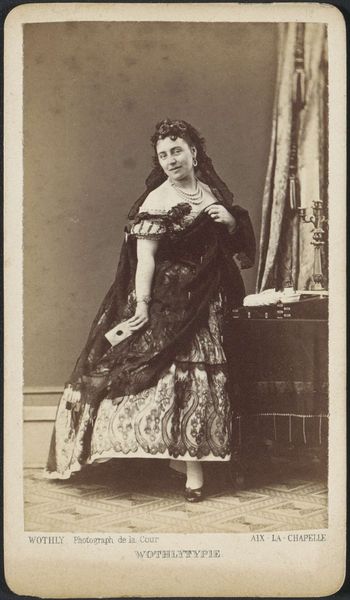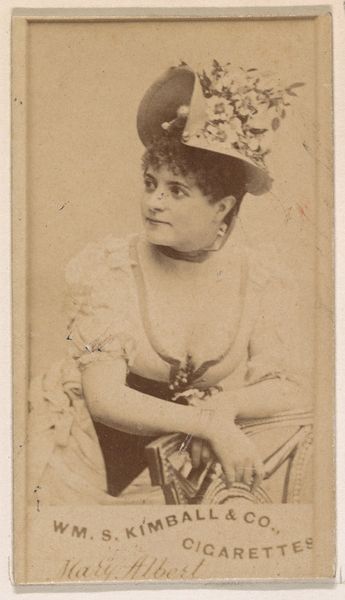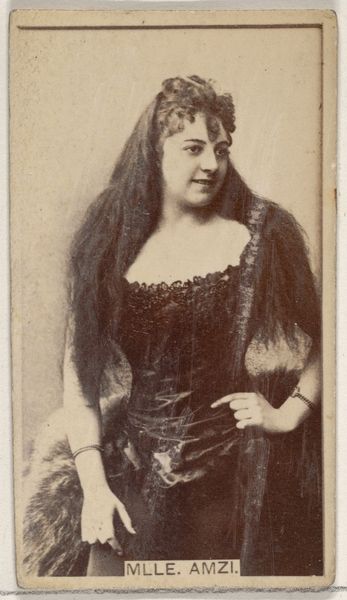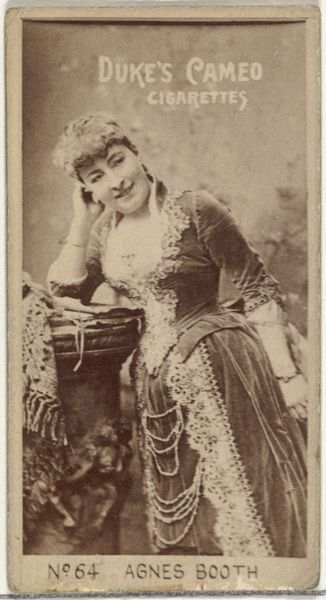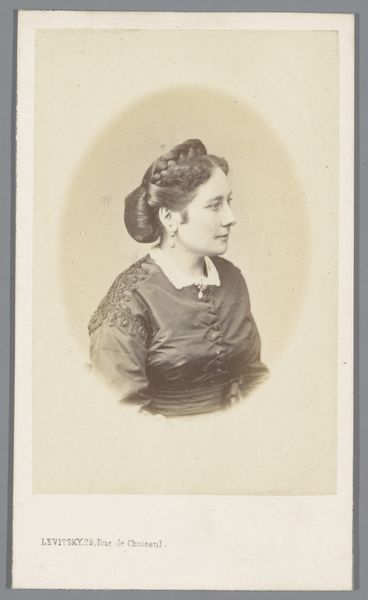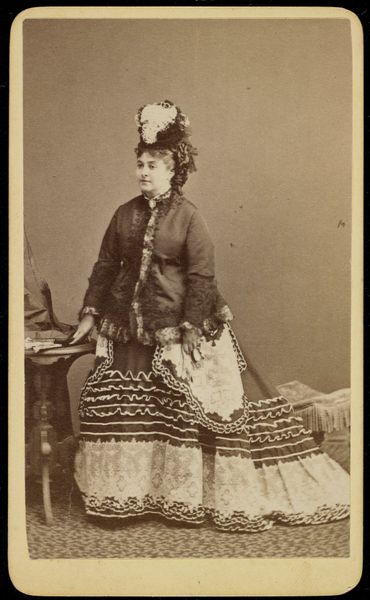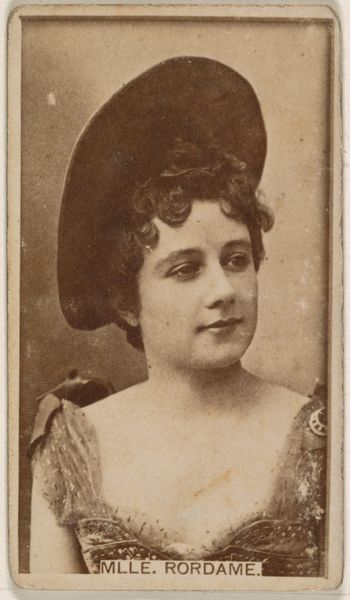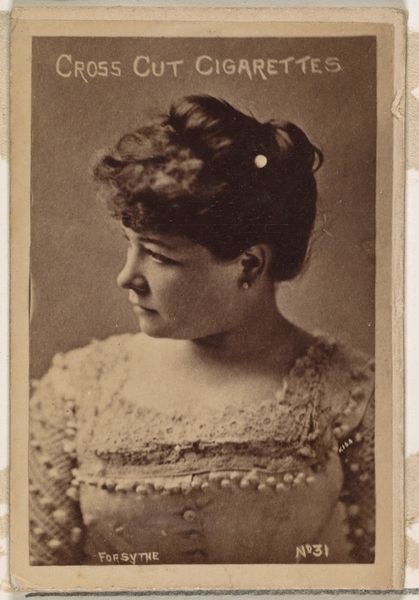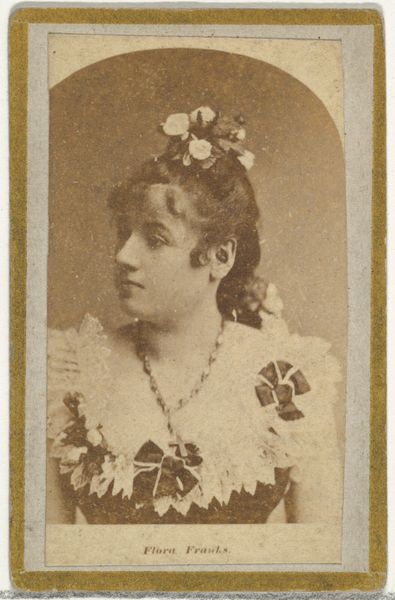
photography
#
portrait
#
caricature
#
photography
#
united-states
#
portrait drawing
Dimensions: 3 3/4 x 2 3/16 in. (9.53 x 5.56 cm) (image)4 1/8 x 2 7/16 in. (10.48 x 6.19 cm) (mount)
Copyright: Public Domain
This photograph of Lea Lilly was created by Jeremiah Gurney, a prominent New York photographer, likely sometime in the 1860s or 70s. During this time, photography studios emerged as important commercial and social spaces. The carte-de-visite format, like the one we see here, gained immense popularity as a way for individuals to collect and exchange portraits of themselves and others. In a society undergoing rapid industrialization and urbanization, the rise of photography democratized portraiture, making it accessible to a wider range of social classes. The ornate jewelry and fashionable dress worn by Lea Lilly are visual cues of her social status and aspirations. These images reflect the growing consumer culture of the time, where individuals could use their appearance to project a desired identity. Understanding the context of this image requires delving into business records, social histories, and the popular visual culture of the 19th century, reminding us that the meaning of art is deeply rooted in its social and institutional context.
Comments
minneapolisinstituteofart almost 2 years ago
⋮
An important part of New York City-based photographer Jeremiah Gurney’s business was making small-size portrait photographs. Beginning in the 1850s, cartes de visite (calling cards, or visiting cards) photographs were popular. They were often made with a four-lensed camera, capturing four of the same image at once. They were printed eight on a sheet and each photograph was mounted on a thick cardboard paper sized 2.5 in. by 4 in. Cartes de visite were shared among families and friends, and mostly were stored in photographic albums. However, by the early 1880s, cartes de visite were replaced by larger cartes de imperiale (cabinet card), also albumen prints, mounted on cardboard backs measuring 4.5 in. by 6.5 in. Because of their size, cartes de imperiale would have been visible from across the room. As such, they were often displayed using frames and small stands.
Join the conversation
Join millions of artists and users on Artera today and experience the ultimate creative platform.
